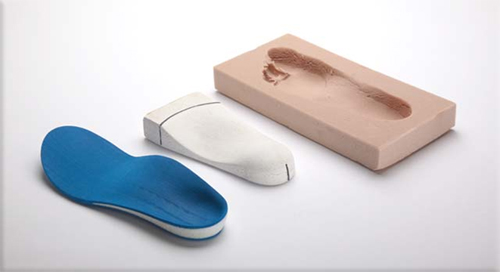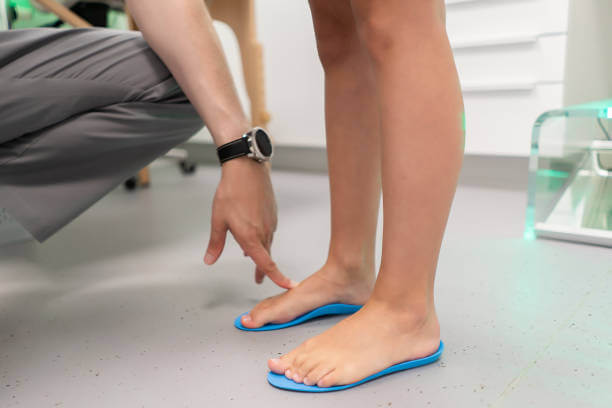Understanding Pressure Points in Ski Boots Erie CO
Cold feet in ski boots can rework an exhilarating day on the slopes into an uncomfortable struggle. Many skiers have confronted this widespread problem, which may arise from a wide selection of elements ranging from improper gear to poor circulation. Understanding the reasons behind chilly ft and implementing effective solutions can significantly improve the snowboarding experience.
The anatomy of a ski boot plays a vital position in heat retention. Most ski boots are designed to offer a comfortable fit, which is essential for effective control and performance. However, if the fit is just too tight, it could possibly constrict circulation, resulting in cold feet. Skimmers could find themselves battling discomfort because of overly tight boots that minimize off blood circulate.
Boot Fitting 101 Essentials Brighton CO
Another vital factor contributing to chilly toes in ski boots is insulation. Ski boots come with different ranges of insulation, and selecting the best level in accordance with the surroundings and personal desire is vital. Brands usually provide boots with various insulation materials, including artificial and natural fibers. Exploring these choices could make a noticeable difference in heat.
Wearing the right socks is just as necessary. Cotton socks, for instance, can take up moisture and lead to chilly ft, whereas specialized ski socks manufactured from merino wool or artificial fibers wick away moisture and help retain warmth. Investing in high quality snowboarding socks should be a top precedence for anyone who enjoys spending time on the slopes.
What happens in a ski boot fitting? Broomfield CO
Moisture administration is another important area to handle (Ski Boots: Analyzing Fit Specifications Thornton CO). Feet can sweat during bodily activities, and this moisture can settle down quickly in low temperatures. Proper moisture-wicking socks and boot liners may help draw sweat away from the skin, preserving feet dry and heat throughout the day. Certain boot liners are designed particularly for this purpose
Adding toe warmers or heated insoles can be efficient for those notably prone to cold toes. These products could be simply inserted into the ski boots and provide further heat throughout colder days. They come in disposable and rechargeable choices, catering to different preferences and wishes.
Regional Custom Boot Fitting Services Longmont CO
Foot positioning plays an integral role in heat as properly. A skier's stance can either promote or hinder sufficient blood flow to the ft. Maintaining an active stance while snowboarding permits for better circulation inside the boots, in the end leading to warmer toes.
Another technique to incorporate is to make sure enough boot administration throughout breaks. Taking the boots off for a short period can permit for higher blood move as properly and heat up chilly toes. Skiers should find a heat place to relaxation, allowing the feet to recuperate from the chilly they may have been subjected to during activity.

It's essential to contemplate the weather circumstances throughout skiing trips. Extremely low temperatures mixed with wind chill can exacerbate the problem of cold toes. Planning ahead by checking the weather forecast and dressing accordingly might help be sure that the right gear is in place to combat the cold.
Dressing in layers is a broader precept that applies not only to skiing attire but in addition to footwear. Skiers can go for boot fashions with removable liners, which offer an option to let them dry out in a single day and guarantee maximum warmth and comfort for the subsequent day on the slopes (Ski Boots: Analyzing Fit Specifications Firestone CO). This method permits a more customized fit and might help dissipate any moisture which will have accrued throughout snowboarding
Fitting Criteria for Varied Ski Styles Lyons CO
With all these issues, ski boot choice must be taken significantly. Trying on completely different brands and models, while also consulting with professionals at ski shops, can lead to better choices tailored for individual needs. There is a variety of options out there available on the market, and the right selection can set the stage for a much more enjoyable skiing experience.

When faced with cold ft, adopting these practices collectively can lead to a more snug experience on the slopes. Experimenting with various combinations of socks, boot liners, heating solutions, and mindful practices will help pinpoint the most effective method for particular person preferences. Preparation, consciousness, and the willingness to regulate can maintain chilly ft at bay.
In conclusion, cold ft in ski boots is a standard but manageable issue. By understanding the factors that contribute to chilly toes and implementing effective strategies, skiers can ensure they enjoy their time on the slopes with heat and comfy toes. Taking the required steps, from gear selection to active management of comfort, could make all of the distinction in crafting a constructive skiing expertise. The slopes are ready, and heat feet can lead to many unforgettable adventures forward.
Ski Boot Fit Trends to Note Lafayette CO
- Ski boots usually have insulation that can entice heat, but poor circulation can result in chilly ft; making certain proper fit can help maintain heat.
- Wearing moisture-wicking socks produced from merino wool or synthetic materials can considerably scale back moisture buildup and help keep toes heat.
- Investing in heated insoles or boot heaters can provide further warmth during significantly frigid days on the slopes.
- Regularly adjusting the tightness of your ski boots can improve circulation; a too-tight fit might constrict blood flow and trigger coldness.
- Consider the layering method; wearing skinny, breathable socks beneath thicker socks can create a thermal barrier without compromising fit.
- Using boot dryers after a day of skiing not solely helps remove moisture but also prepares your boots for heat the following day.
- Pre-warming ski boots by putting them near a heater or utilizing a boot warming bag can make a direct distinction in comfort.
- Taking breaks to stretch and warm up toes might help reactivate circulation, particularly throughout long snowboarding sessions.
- Choosing boots with superior thermal insulation designed for colder situations could provide added protection in opposition to frigid temperatures.
- Proper boot alignment and an ergonomic fit can contribute to better blood circulation, serving to forestall chilly ft throughout snowboarding.undefinedWhat causes chilly ft in ski boots?
Cold feet in ski boots usually result from poor insulation, moisture build-up, or insufficient circulation. When skis aren't correctly fitted or if socks are too tight, they will limit blood circulate, resulting in a chill.
How can I stop my ft from getting chilly while skiing?
To forestall cold ft, put on moisture-wicking, thermal socks designed for skiing. Ensure your boots are well-fitted and think about using foot warmers or heated insoles for added warmth.
Testing Fit During Ski Activities Westminster CO
Is it better to put on thicker socks to keep my ft heat in ski boots?
Wearing thicker socks can typically limit circulation, leading to colder ft. It’s best to choose a skinny, insulated sock designed specifically for snowboarding to keep both heat and circulation optimal.
Personalizing Your Ski Boot Fit Lyons CO
What ought to I do if my feet get chilly whereas skiing?
Take a break to warm your ft. Remove your boots for a brief period, wiggle your toes, and permit for air circulation. Consider utilizing heated insoles or foot warmers as a direct solution.
Ski & Snowboard Boot Fitting Overview Frederick CO
Are there specific ski boot manufacturers known for higher insulation?
Yes, some brands are recognized for superior insulation and luxury, such as Salomon, Tecnica, and Nordica. Research consumer reviews to find models that excel in warmth and fit primarily based on your skiing type.
Fitting Aspects Impacting Performance Dacono CO
How usually should I exchange my ski boots to avoid cold feet?
Replacing ski boots every 3-5 years is suggested if they show signs of wear - Bootfitting 101: Sizing Overview Northglenn CO. Over time, insulation and comfort diminish, making it simpler for chilly feet to turn out to be a difficulty
Can I use regular winter socks in my ski boots?
Fit Guide for Ski Boots Broomfield CO
Regular winter socks are sometimes too thick and might impede circulation. It’s best to use socks particularly designed for snowboarding to ensure correct fit and heat with out compromising blood flow.
What are some effective methods to dry my ski boots overnight?
To dry ski boots successfully, remove the liners and place them in a warm, dry area. Use boot dryers or stuff boots with crumpled newspaper to soak up moisture, which helps stop chilly feet on the subsequent day.
Balancing Comfort and Performance in Fit Lyons CO
Are there any methods to improve circulation in my ft while skiing?
Standing on your toes or wiggling your toes contained in the boot can promote better blood move. Additionally, ensuring your boots are not too tight might help preserve circulation and warmth.
helpful site read this post here